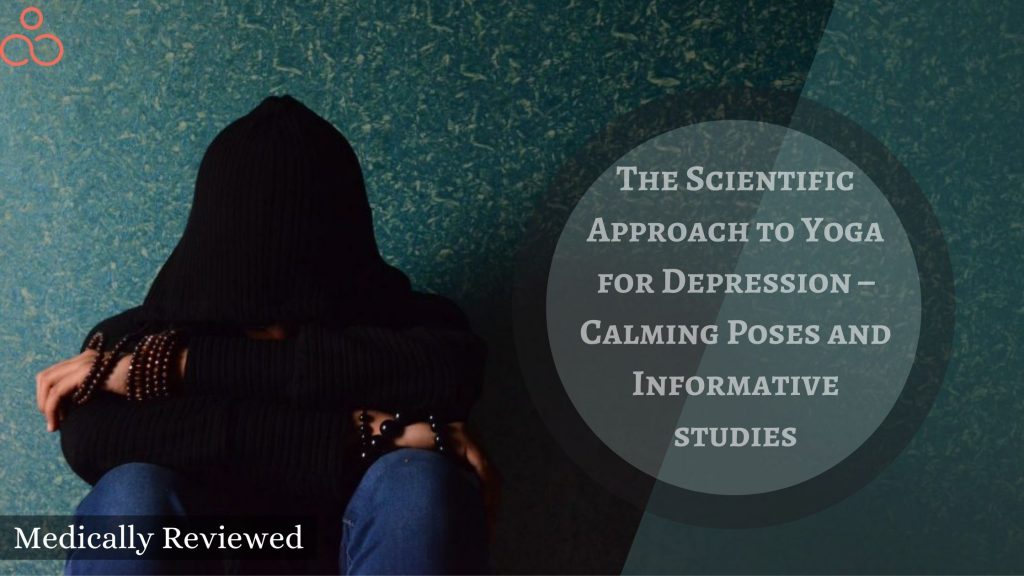Medical parts were written by Dr. Rai
Millions of people are suffering from depression, making it a leading mental health disorder throughout the world. Depression causes disinterest in daily activities and triggers feelings of hopelessness, helplessness, and worthlessness. Over a period, depression could lead to severe physical and emotional issues. Some people might even develop suicidal thoughts. Although Yoga is not being suggested as an alternative to therapy, many studies have been conducted on Yoga for depression over the past few decades, which prove that Yoga can bring in a substantial positive impact on those experiencing depression. Let us understand in deeper detail why Yoga gained its popularity and what Yogic poses could help alleviate depression in the long run.
Relation between Yoga and Depression
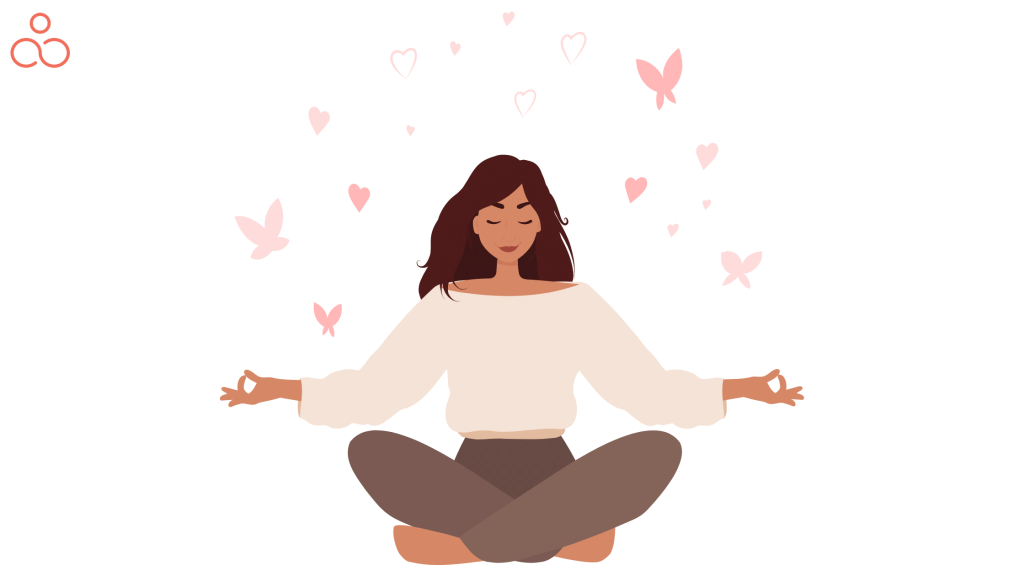
Yoga can work wonders as an antidepressant. To understand how Yoga helps depression, we must first understand what exactly happens during the depression. A person with depression experiences lower blood circulation as the neurotransmitters of our brain get affected. Depression can make it hard for you to get your body moving and always gets you sleep-deprived as your circadian cycles (your inner clock) get disturbed. People with depression are known to produce lower levels of serotonin – the happiness hormone. A deficit in serotonin levels has been researched, and studies show that it impacts mood disorders. In a controlled randomized study conducted to find the effect of Yoga therapy in depressive disorders, results showed a significant fall in the participant’s anxiety and depression score.
Another randomized study on individuals who underwent an 8-week Hatha Yoga intervention as a monotherapy (treating a disease with only one drug) for mild to moderate depression resulted in a significant reduction in the severity of depression. Yoga naturally releases the hormone serotonin, which is important when it comes to the treatment of depression. Serotonin and Oxytocin, and Dopamine are the key hormones that make us feel or experience happiness. They help stabilize our mood and play a vital role in digestion, sleep, and eating patterns.
A study conducted to review Yoga interventions and their impact on depressive symptoms stated that Yoga could be used as a supportive treatment to treat depression and many other health conditions. Yoga helps improve self-esteem due to the pattern of exercise where there is a combination of body and mind. Yoga and meditation have received increased attention as scientific studies have proved both direct and indirect benefits in groups experiencing mental health issues like anxiety and depression. Check our sections out on Yoga for Stress and anxiety to understand more about how Yoga can help!
The well-known therapy for depression involves regular sessions with your therapist and pharmaceuticals. Sadly, this approach doesn’t work for everyone. According to this study, only about 1/3rd of patients respond well to antidepressant treatment. Being in the Yoga industry for over a decade, we have been watching an increasing interest in mind-body practices. We talk about studies in which it is shown that Yoga and Meditation both positively affect people suffering from depression by reducing the symptoms. Yoga helps immediately as well as long term, according to the research presented in the study.
A study conducted in 2019 found that Yoga might be beneficial as a complementary treatment for patients who have been suffering from clinical depression or MDD (major depressive disorder). Within a month, the patients’ sleep quality improved significantly. The symptoms of anxiety and depression have reduced while there has been an increase in positivity and tranquility.
In another study conducted in 2016, scientists compared the effect of physical activities like walking vs. mindfulness-based yoga intervention on depressed women. The results showed that the yoga-practicing group had better results after 12 weeks. Both groups showed an improvement in their symptoms. Still, the yoga group had significantly lower levels of rumination.
Similarly, a study has been conducted on expectant mothers who have been advised for bed rest due to high-risk pregnancies and were prone to depression. Since treatment for depression through medicines isn’t advisable for pregnant women, as few as 3 Yoga sessions helped lower their anxiety and depression scores. Certain studies also show that Yoga might be a promising form of complementary treatment for individuals who have entered rehabilitation for alcohol and drug addiction.
Affirmations for the Mind
While doing Yoga or meditation, think about everything that you are grateful for. It could be anything, your job, your assets, your children, your pet, or your health. Focus on what you are grateful for, chant a mantra or even an affirmation as it would positively impact your mind and body. A lot of people find it difficult to think of an affirmation as it is a relatively new concept. Let us help you out and give some affirmations that you can repeat in your mind during your Yoga practice.
- Once I overcome my depressive state, I will be much stronger.
- I am loved by the universe, no matter who I am.
- I trust myself that I can do more than I think.
- I rest but don’t quit because my discomfort won’t last forever.
- I love myself, and I am much stronger than I believe.
- I am strong and can win over my struggles fearlessly.
- I am self-sufficient and a silent warrior.
- I can control my thoughts, and thoughts can change.
- I am free to choose how I feel, and I choose happiness.
- I am perfect the way I am, and I believe in the process of life.
While these are a few sentences that could be chanted, you could always pick your line drafted in your words as it could be more powerful and connected too. If you find this tedious to start with, do not push yourself. At least start taking baby steps by focusing on any thought that makes you happy for a short duration. It is fine if you drift away to something that makes you sad. Just try to consciously get back to happy and positive thoughts during your Yoga practice.
Yoga Poses to Alleviate Depression
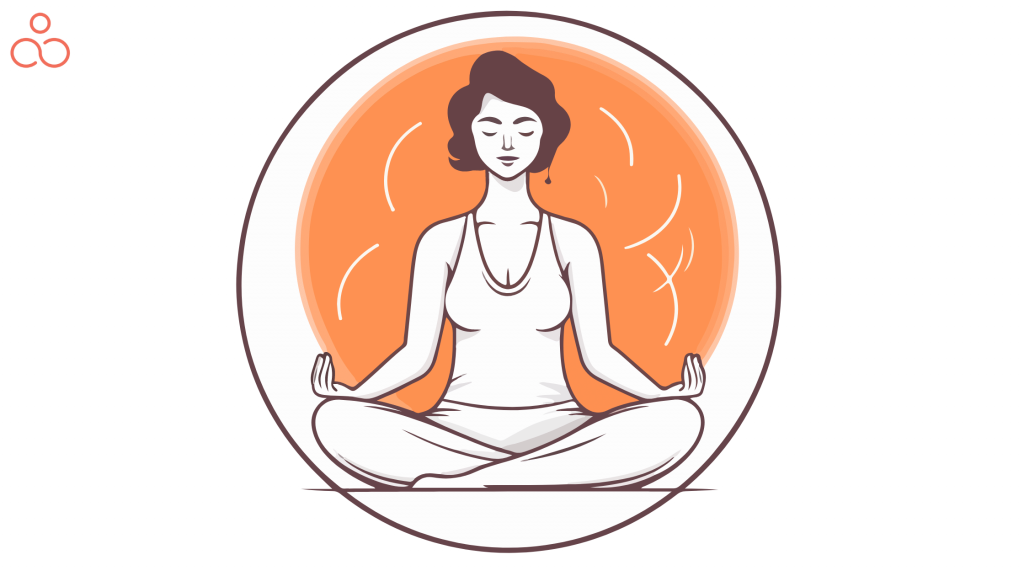
Yoga has a different approach as it is an exercise with a body and mind combination. Though any form of physical activity could be helpful, Yoga is believed to be better. Many of my patients have been using Yoga and meditation for stress, back pain, anxiety, depression, flexibility, strength, and to achieve more such goals or heal from within. The number of Yoga studios can be seen popping up, and many young folks are also choosing Yoga Teacher Training as a career path to spread the positive impact and balance it can bring on our lifestyle. As per this study, conducted on 1080 participants in the review and 632 participants in the meta-analysis, results show that Yoga showed greater reductions in depression symptoms.
Here, we have come up with a list of Yoga asanas that could help alleviate depression in the long run.
- Dhanurvakrasana or Bow Pose – This pose is slightly difficult to achieve in the right alignment but can give wonderful benefits to the entire body. The final pose looks like an archer’s bow. It helps in strengthening the spine, tones abdominal muscles, improves digestion, and lowers stress.
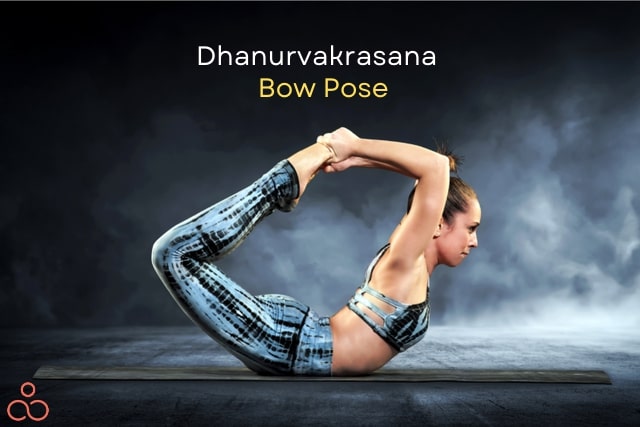
- Eka pada adho mukha svanasana or One Legged Downward Facing Dog Pose – It is an intermediate level Yoga pose and involves forward bend, inversion, stretch, and balance. This is a variation to the traditional Downward Facing Dog Pose. It helps lengthen the spine, tones your core, strengthens the arm muscles, and improves blood circulation to the brain.
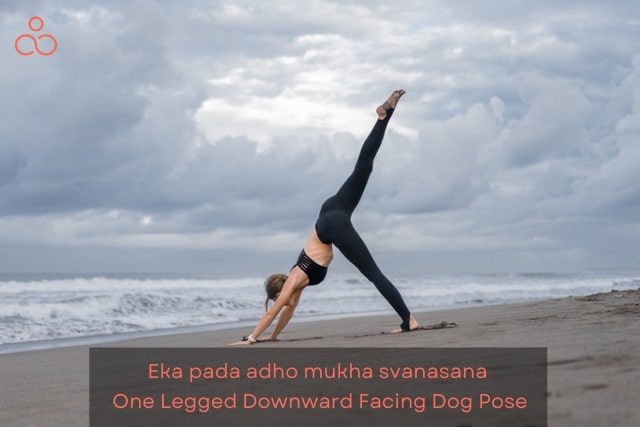
- Adho Mukha Vrikshasana or Downward Facing Tree Pose – This pose is also called the Handstand or Tilted Tree Pose and is an inversion asana in Modern Yoga. This is an advanced-level pose. It calms your nerves, improves blood circulation, strengthens the arms and wrists, stretches the abdomen, and helps reduce stress and mild depression.
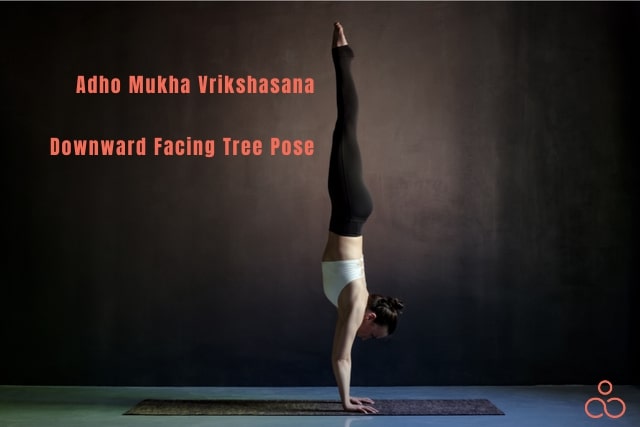
- Urdhva Hastasana or Raised Hands Pose – This pose is also referred to as Upward Salute Pose and is a very natural stretch to the body, often done in the mornings immediately after we wake up or after sitting for long periods. It improves posture, enhances pulmonary efficiency, stimulates the digestive system, improves blood circulation, and awakens the body from head to toe.
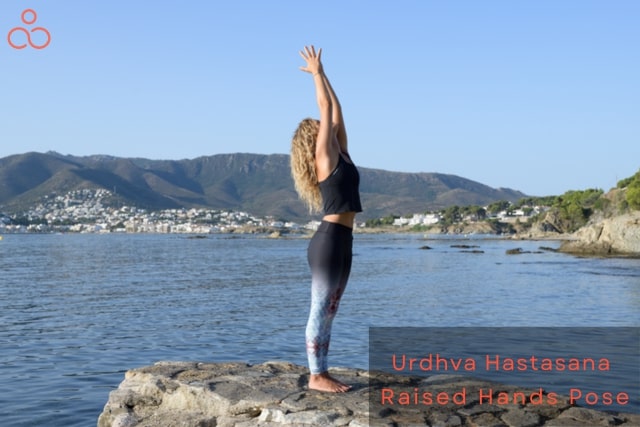
- Viparita Dandasana or Inverted Staff Pose – This is yet another Modern Yoga Pose with a combination of inversion and backbend. It is found in medieval Hatha Yoga texts. It helps open the chest fully and keeps the spine healthy. It improves blood circulation, strengthens the arms, and stimulates your intestines.
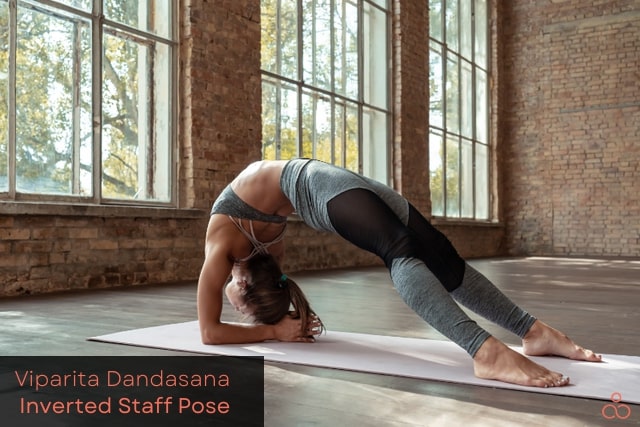
- Halasana or Plough Pose – This is an inverted asana practiced in Hatha Yoga and Modern Yoga. It calms the nervous system, stretches the shoulders and spine, stimulates abdominal organs, reduces stress and fatigue, and calms the brain.
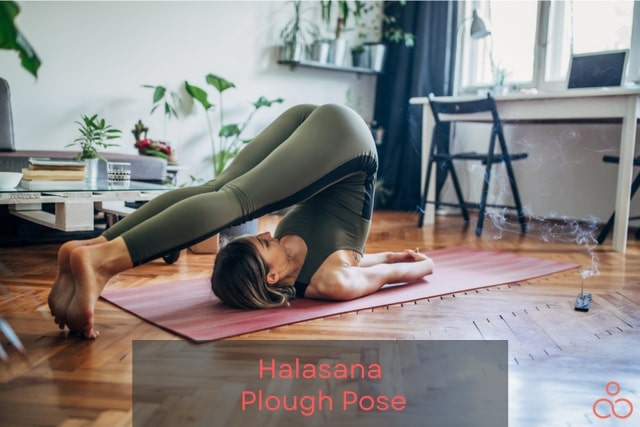
- Balasana or Child Pose – It is a resting pose and is often practiced between poses to stretch and relax. It acts as a counter asana for various other asanas. It stretches the thighs, hips, and ankles. It calms the brain and relieves stress in the back and neck. It allows you to breathe deeply and helps restore energy.
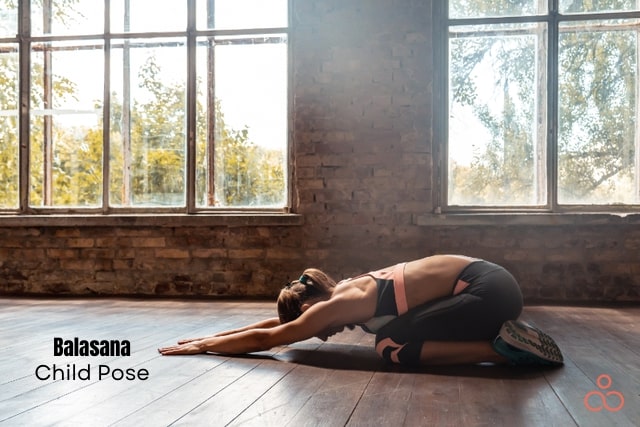
- Setu bandha Sarvangasana or Bridge Pose – It is an inverted back bending asana practiced in Hatha Yoga and Modern Yoga sequences. It strengthens the calves and thigh muscles, strengthens the shoulders, relieves back pain, and improves digestion.
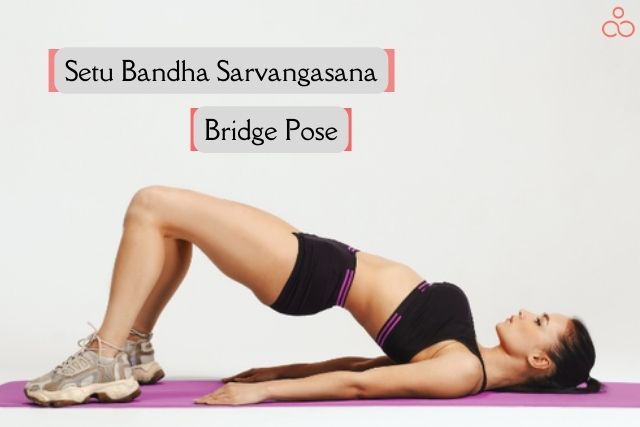
- Urdhva Mukha Svanasana or Upward Facing Dog Pose – This is a back-bending pose and is sometimes used as a step in the Surya Namaskar or Sun Salutation Sequence as an alternative to Bhujangasana. It strengthens the vertebral column, stretches the shoulders, lungs, and abdomen, and improves posture. It also helps relieve depression and fatigue.
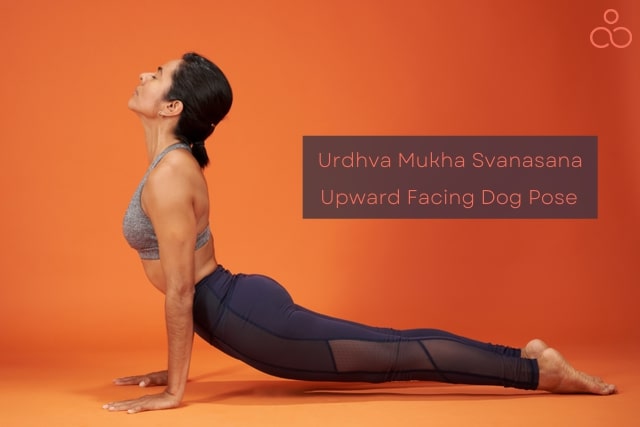
- Paschimottanasana or Seated Forward Bend Pose – As the name suggests, this is a forward bending pose and has a beautiful calming effect on the nervous system. It relieves stress and depression, improves digestion, soothes headaches, reduces fatigue and anxiety, and calms the brain.
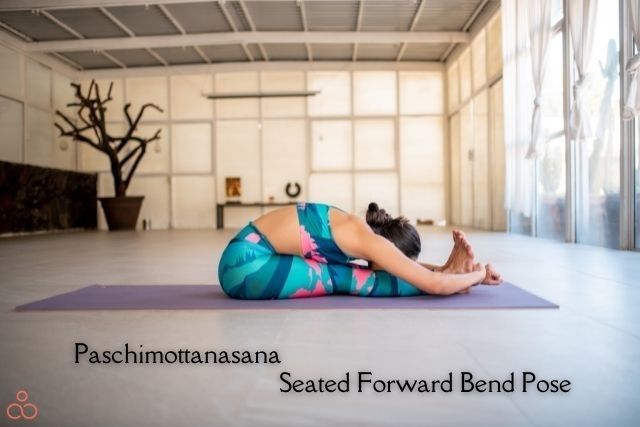
- Makara Adho Mukha Svanasana or Dolphin Plank Pose – This is an intermediate-level pose, and it helps to strengthen the entire body from head to toe. It improves the body posture, betters blood circulation, tones the abdomen, and strengthens the shoulder joints.
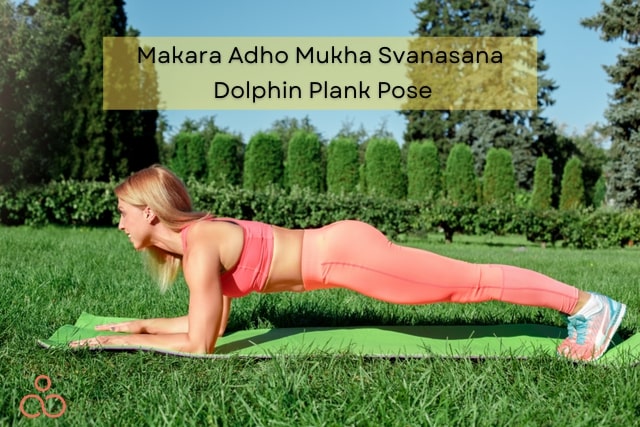
- Baddha Konasana or Bound Angle Pose – This is a seated pose practiced in Hatha Yoga and is also known as the Butterfly Pose. It stimulates the abdominal organs, stretches the inner thighs, soothes menstrual discomfort, stimulates the heart, improves blood circulation, and relieves mild depression, fatigue, and anxiety.
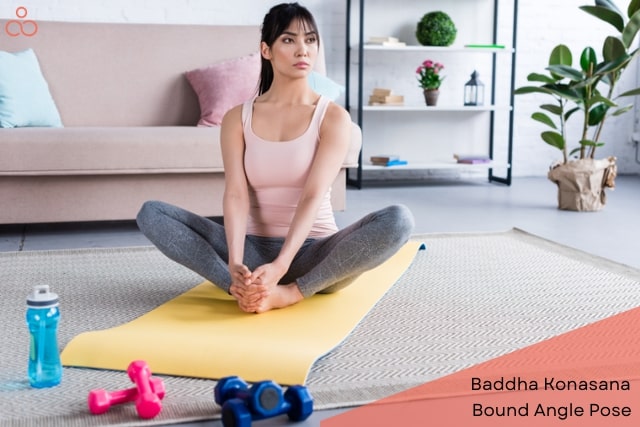
Quick Tips
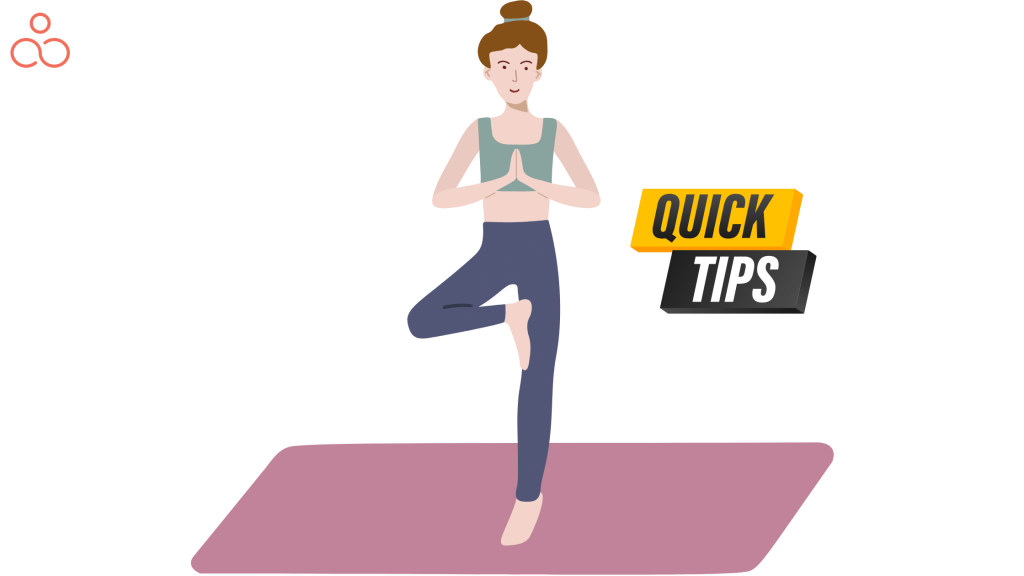
- If you haven’t exercised regularly in a while, you should be able to add light to moderate movement to your routine without talking to your doctor. If you’re older than 50, have a medical condition, or are pregnant, check with your doctor before starting a new exercise routine.
- If you are a beginner, you can try Hatha Yoga or Vinyasa flow. If you want something more challenging, we recommend you try Ashtanga Yoga.
- Always try to finish your session with meditation. Find audio suitable for a guided meditation on YouTube or listen to a relaxing song.
- In addition to the above-mentioned Yoga asanas, include the Shavasana or Corpse Pose in your practice. Yoga Nidra, aka Yogic Sleep, is also known for its phenomenal impact on the mind and body.
Conclusion
Despite the benefits of Yoga for depression, it is not a substitute for therapy. More studies are being conducted for conclusive answers. So far, the evidence shows it can be a method of complementary and supportive treatment that can work. In India, it is believed that it is good for you on all levels of being, meaning mental, physical, and spiritual. But most tend to underestimate it.

